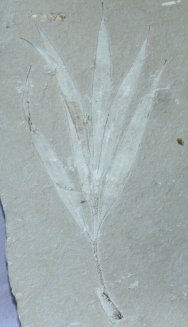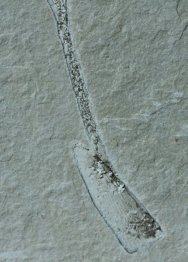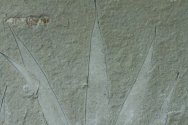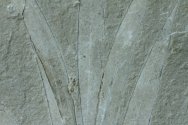Sapindopsis
anhouryi
Division
Magnoliophyta, Class Magnoliopsida, Order Sapindales; Sapindaceae
Geological
Time: Middle Cretaceous, Middle Cenomanian Stage (93 million years
ago)
Size (25.4
mm = 1 inch): Plant fossil is 213 mm long, 95 mm across on a 250 mm by
145 mm matrix
Fossil
Site: Lebanese Lagerstatte, en-Nammoura, Lebanon
Fossil Code:
L591
Price: Sold
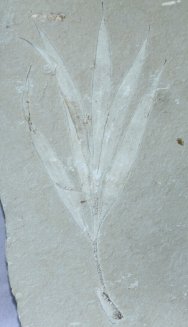 Description:
Known for its incredibly well-preserved fish and crustaceans,
the sublithographic limestone of the Cretaceous of Lebanon also
preserved incredible detail here as well. This is an exceptional
example of the Sapindaeceae (soapberry tree) known as Sapindopsis,
a genus found as well in the Cretaceous deposits of western North
America. The modern-day genus Sapindus was first seen in the
Eocene of North America. Its fruits contain saponin, a substance
that has been used as a soap substitute. Few plants are preserved
in the Cretaceous marine deposits of Lebanon, and most are marine
algae, so this is a most uncommon fossil. The en-Nammoura location
preserves more plant examples than either Hajoula or Haqel, leading
some to believe it was a site closer to land, allowing for greater
preservation of terrestrial plants such as this. The quarries
of en-Nammoura are one of the few places where plants of this
age are preserved, and this is an exceptional example of the
type. Notice the preservation of the venation, making this a
very detailed specimen. Description:
Known for its incredibly well-preserved fish and crustaceans,
the sublithographic limestone of the Cretaceous of Lebanon also
preserved incredible detail here as well. This is an exceptional
example of the Sapindaeceae (soapberry tree) known as Sapindopsis,
a genus found as well in the Cretaceous deposits of western North
America. The modern-day genus Sapindus was first seen in the
Eocene of North America. Its fruits contain saponin, a substance
that has been used as a soap substitute. Few plants are preserved
in the Cretaceous marine deposits of Lebanon, and most are marine
algae, so this is a most uncommon fossil. The en-Nammoura location
preserves more plant examples than either Hajoula or Haqel, leading
some to believe it was a site closer to land, allowing for greater
preservation of terrestrial plants such as this. The quarries
of en-Nammoura are one of the few places where plants of this
age are preserved, and this is an exceptional example of the
type. Notice the preservation of the venation, making this a
very detailed specimen.
|
|


